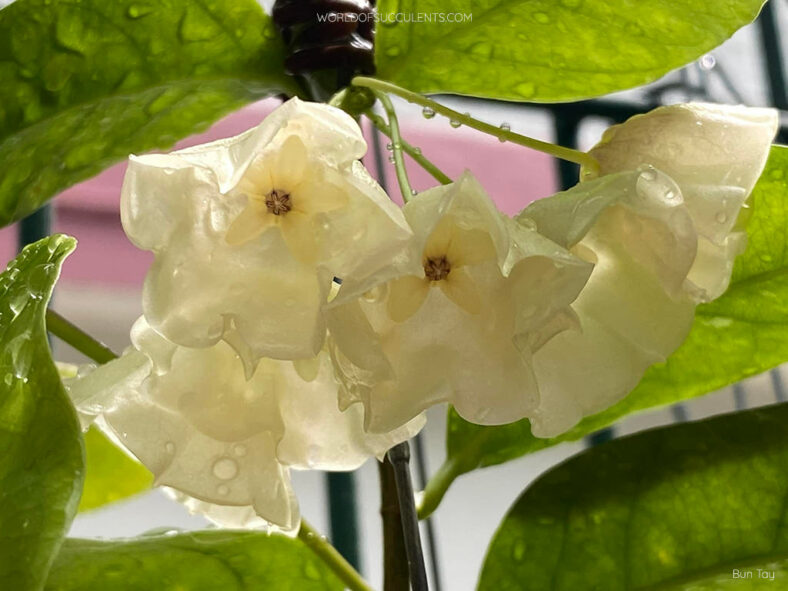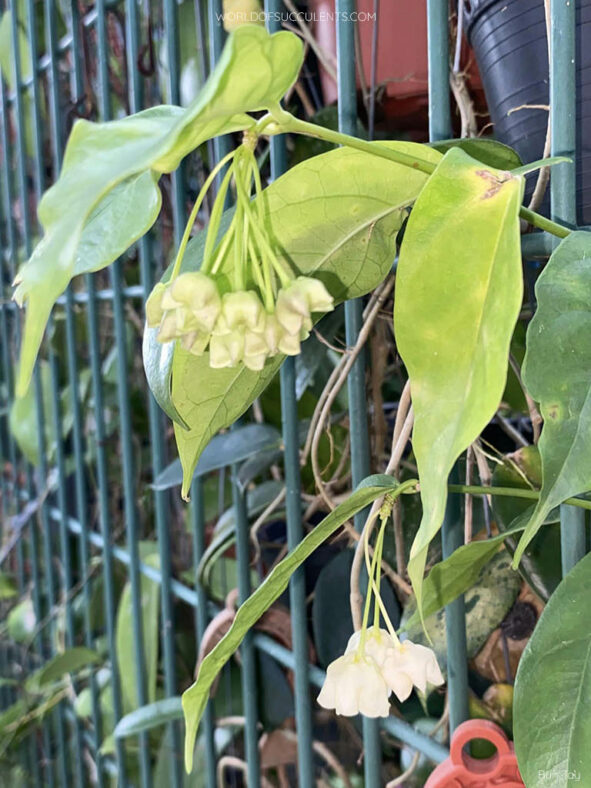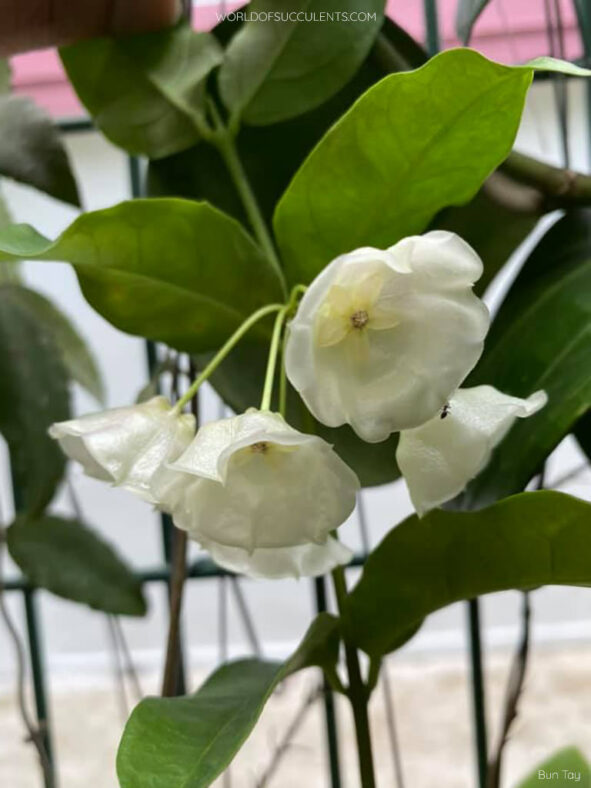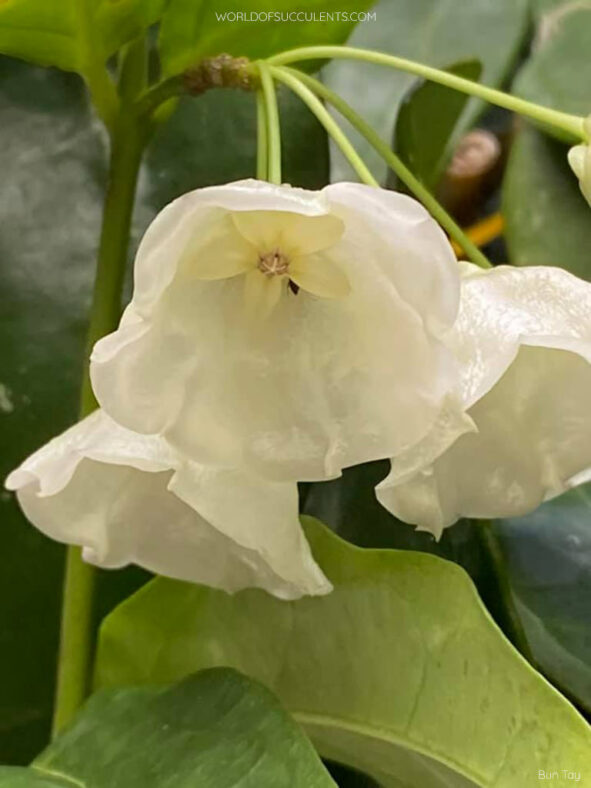This Hoya was mistakenly sold as Hoya wallichii for a long time until 2009, when it was published as Hoya danumensis by M. Rodda and T. Nyhuus.
Scientific Name
Hoya danumensis Rodda & Nyhuus
Synonym(s)
Hoya danumensis subsp. danumensis
Scientific Classification
Family: Apocynaceae
Subfamily: Asclepiadoideae
Tribe: Marsdenieae
Genus: Hoya
Etymology
The specific epithet "danumensis" (pronounced day-num-MEN-sis) refers to the Danum Valley in Sabah, Malaysian Borneo, where this species was discovered in 1993.
Origin
Hoya danumensis is native to Borneo, Malaysia. It grows as a climbing epiphyte or lithophyte in the lush rainforests of the state of Sabah.
Description
Hoya danumensis is a stunning climber with thin, wiry stems that bear green, elliptical leaves with prominent pinnate venation.
During the summer, Hoya danumensis produces magnificent white, bell-shaped flowers arranged in clusters of 8 to 10. The flowers are lightly fragrant and last for only three days.

How to Grow and Care for Hoya danumensis
Light: Even if this plant can tolerate lower light levels, it may become weak and leggy if the light is too low, resulting in fewer leaves and flowers. Therefore, keeping it indoors in bright, indirect sunlight is best.
Soil: Well-draining soil that provides excellent aeration and does not hold too much water is most important for growing a healthy plant.
Temperature: Hoya danumensis thrives in hot and humid climates, so keep it away from drafty windows and doorways during the colder months. It grows best in USDA Plant Hardiness Zones 11a to 11b, with average minimum winter temperatures ranging from 40°F to 50°F (4.4°C to 10°C).
Watering: Since this plant is sensitive to overwatering, soak the soil thoroughly in spring and summer, but allow it to dry out before watering again. Otherwise, you will increase the risk of root rot, and your plant will not be happy. It is relatively dormant during the fall and winter, needing only moderate watering.
Fertilizing: Although Hoya danumensis is not a heavy feeder, it can benefit from a high-potassium fertilizer at half strength every two weeks during the growing season.
Repotting: As an epiphyte, this plant has a shallow root system and needs a deep container. It also does not require frequent repotting. It prefers to be slightly root-bound, so repot it in spring only if it has outgrown its container.
Propagation: Although layering is the easiest way to propagate Hoya danumensis, using stem cuttings is the most popular method. Using leaf cuttings can be more challenging, while starting it from seeds is the simplest but the most time-consuming method. For best results, take cuttings only when the plant is actively growing. Sow seeds in spring and summer.
Learn more at How to Grow and Care for Hoya.
Toxicity of Hoya danumensis
Hoya danumensis is considered non-toxic, so it is safe to have around kids and pets.
Links
- Back to genus Hoya
- Succupedia: Browse succulents by Scientific Name, Common Name, Genus, Family, USDA Hardiness Zone, Origin, or cacti by Genus
Photo Gallery
Click on a photo to see a larger version.


